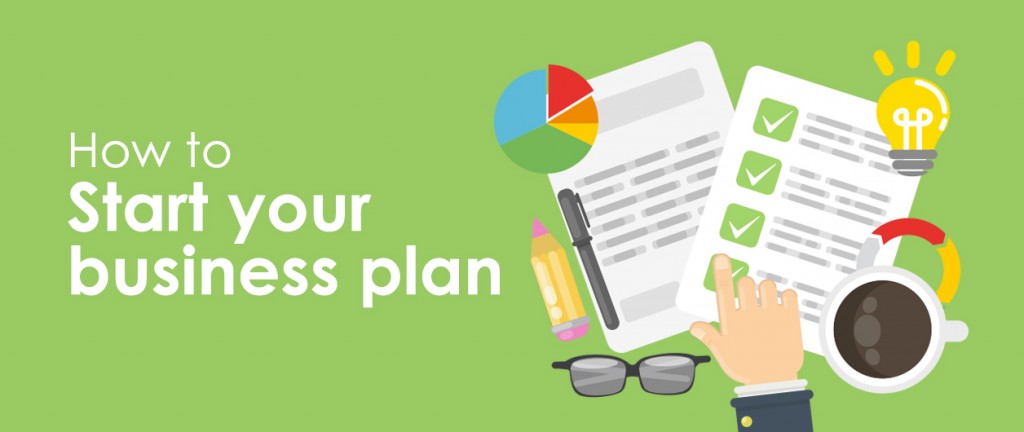Writing a business plan is an essential step towards making a new business viable. You’ll need one to get investment from VCs, you’ll probably need one to secure a business loan, and most importantly of all, you’ll need one to help turn your business ideas into a workable plan of action.
In a nutshell, a business plan is a document that describes how a business will get from where it is today to where it wants to be. This article covers the initial steps needed to put one together.

Start with auditing your business today
If you’re preparing to write a business plan, there are three key steps you’ll need to take:
1. Audit the business’ situation as it stands today;
2. Set goals for what you want the business to achieve within a certain number of years;
3. Create a marketing plan, operational plan and financial plan to map out how the business will reach its goals.
Let’s start at the start, by auditing your current situation.
Make a spreadsheet and list all the resources and capabilities your business has available to it. These might include:
• Financials like cash, credit and debts;
• Assets like business premises and vehicles;
• Intellectual property such as registered trademarks and patents (if applicable);
• Human resources;
• Contracts, agreements and expressions of interest with external stakeholders; and
• Any other resources or capabilities that apply.
You should end up with a detailed summary of where your business stands today.
Set business goals based on market research
The next step is to describe the destination of your business. Where will you be in 1 year’s, 3 years’ and 5 years’ time, in terms of concrete factors like assets, profit, turnover, market share and brand recognition?
To set useful business goals, you’ll need to balance your ambitions with analysis of the opportunities that exist for a business like yours.
You may find it helpful to use a strategy tool such as SMART goalsetting, which gives a checklist of factors to form your goals against. These are:
• Specific: the goal should be clear and well-defined, e.g. with sales volumes and profit margins;
• Measurable: there needs to a way to measure the extent to which a goal has been achieved, e.g. sales figures, footfall, website hits;
• Achievable: taking market research and your business’ resources into account;
• Relevant: the goal should be appropriate to your brand, to your capabilities and to you as a person;
• Timely: the goal must be deliverable against a specific schedule.
Analyse your business and the market it operates within to determine whether your goals meet the SMART criteria.

Plan how the business will reach its goals
Now we’ve covered where your business is today and where it wants to get to, we need to work out how it will make that journey.
We can break this down into three plans that focus on specific aspects of the business. Let’s go through them:
Marketing plan
The marketing plan describes how the business will connect with customers.
Think about each of the following points, and try to come up with an answer that will get your business from where it is today to where it wants to be:
• How will you serve customer wants and needs with its products and services?
• What is its pricing strategy to ensure a fair cost for customers?
• Which sales channels and options will you use to make purchasing convenient for customers?
• How will you communicate with customers (including advertising and customer care)?
These questions are based on Bob Lauterborn’s 4 Cs marketing mix, which is a framework used by marketers to help with campaign planning. If you can get each point right, you’ll be in a good position to market your business successfully.
Operations plan
The operations plan describes the who, what, when, where and how of a business:
• Who – which team members, departments, contractors and other people will the business have on-board?
• What – what are the responsibilities of each team member and department?
• Where – where will business operations take place, e.g. office, warehouse, shop, remote working?
• When – what are the deadlines for tasks, projects and business goals?
• How – what monies and other resources are required to make all this possible?
You may find it convenient to break down your operations plan into a calendar of projects, with a separate section for day-to-day operations.
Financial plan
The financial plan is a projection of financial performance over the duration of the business plan, usually split down by month and presented in a table.
Your financial projections should be based on the details of the marketing plan and operations plan. A typical financial plan will include the following sections:
• Revenues
• Variable expenses
• Fixed expenses
• Profit before tax
• Profit after tax
The marketing plan, operations plan and financial plan jointly form a comprehensive business plan, suitable to share with stakeholders and use as the basis for launching a business.

Next steps
The points covered in this article should have given you the main building blocks needed to start writing a business plan.
Next, you’ll need to edit your business plan into a format that makes it easy for business partners, investors and other stakeholders to understand. This traditionally means dividing the business plan into the following sections:
• Executive summary highlighting the most important info.
• Company description – the what, where, who and when of the business.
• Product/service details – a description of what you will sell and how it will serve a consumer want or need.
• Market analysis – in-depth data on the market the business will compete in, including stats on market size, competitor analysis and projected growth in demand.
• Marketing plan
• Operations plan
• Financial plan
You should aim to spend anywhere from a few days to a few weeks working on these components and putting them together. How long exactly will depend on the complexity of the business.
Gov.uk has lots of good guidance on how to write a business plan. For further inspiration, check out Bplans’ library of over 500 sample business plans.







